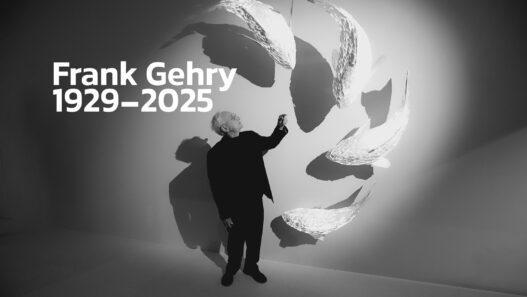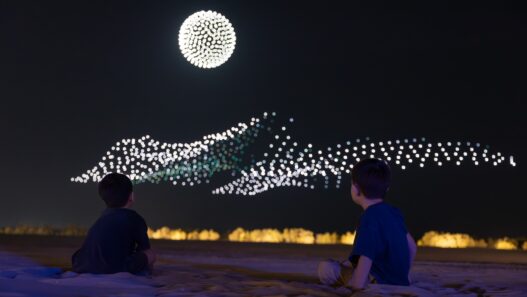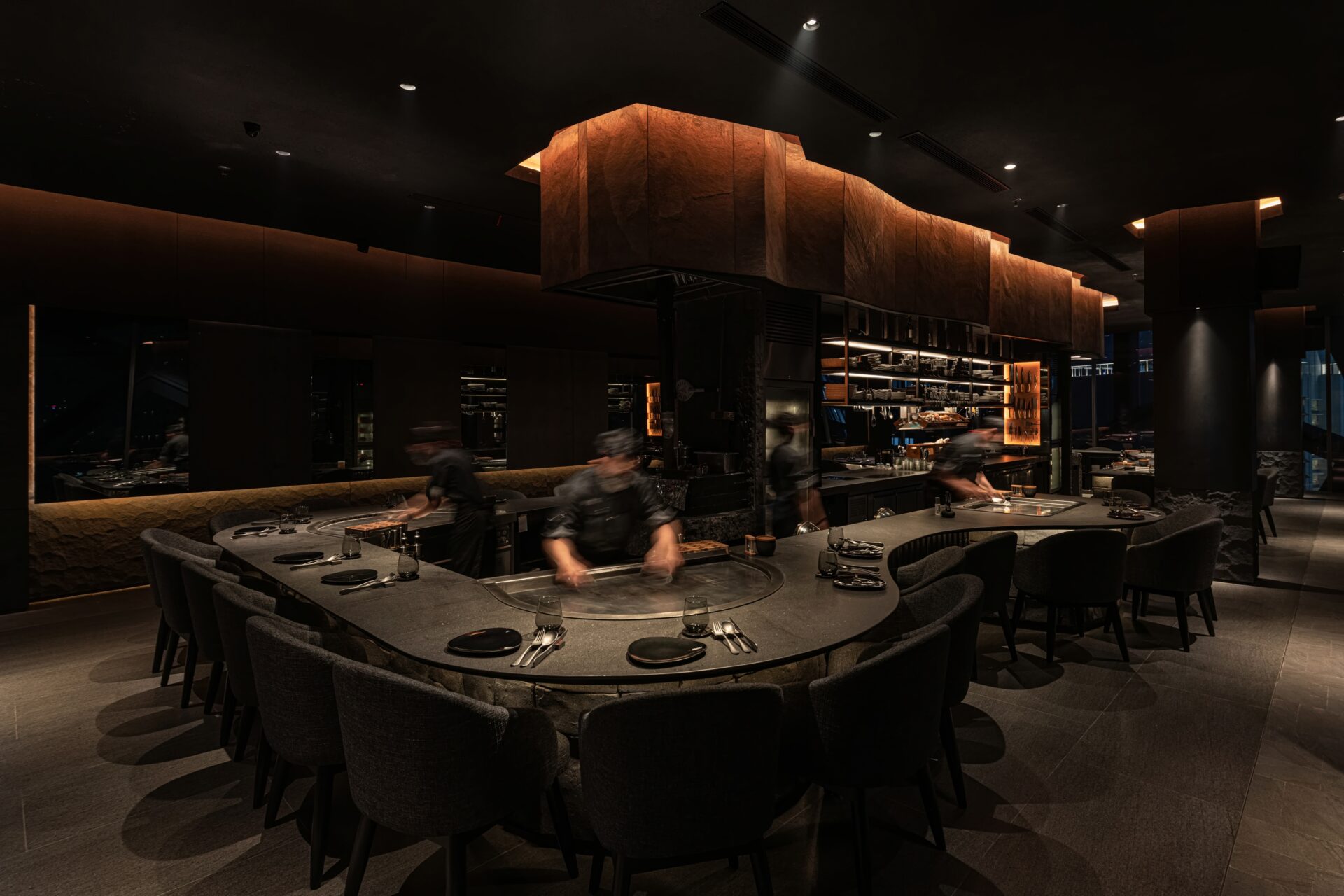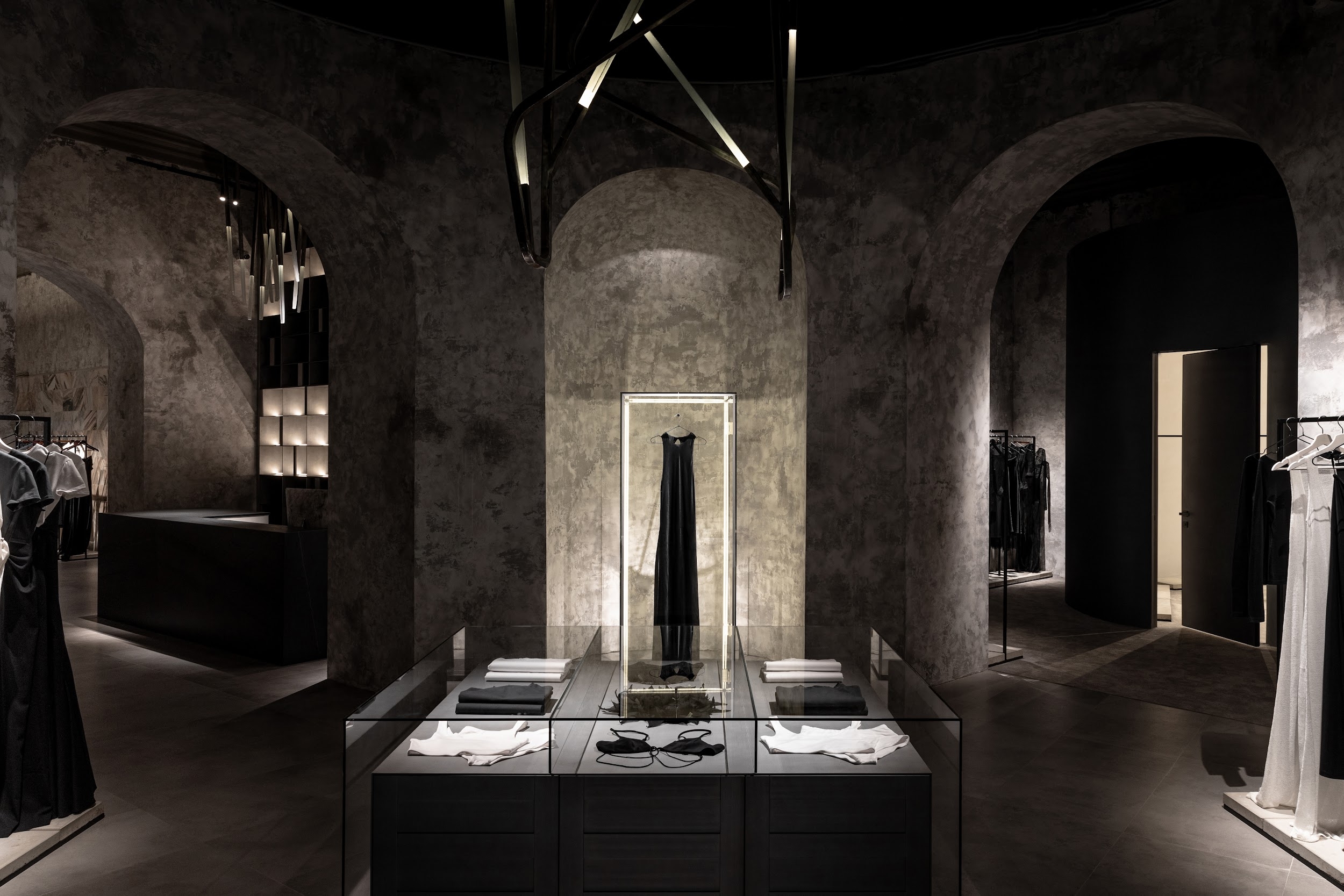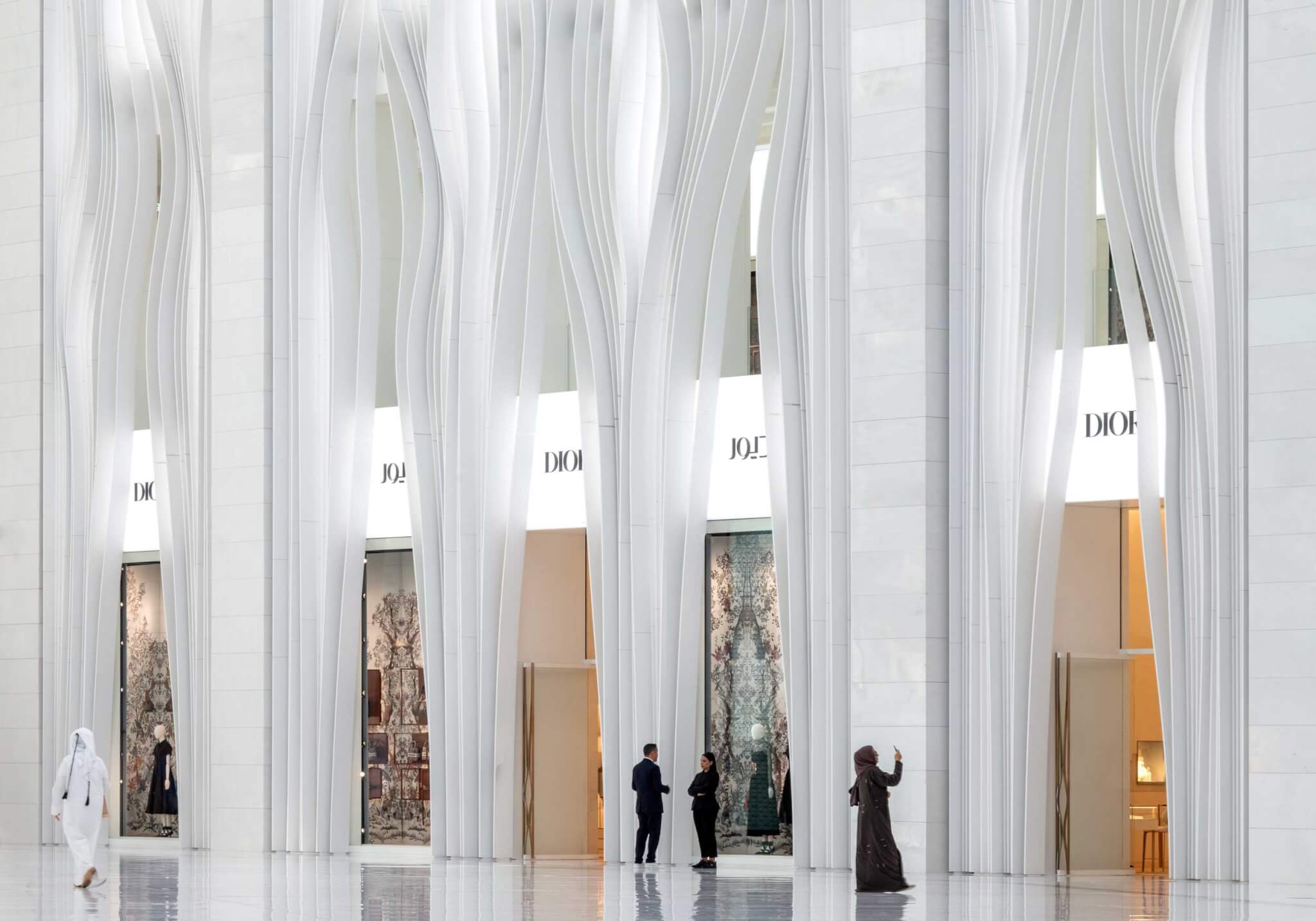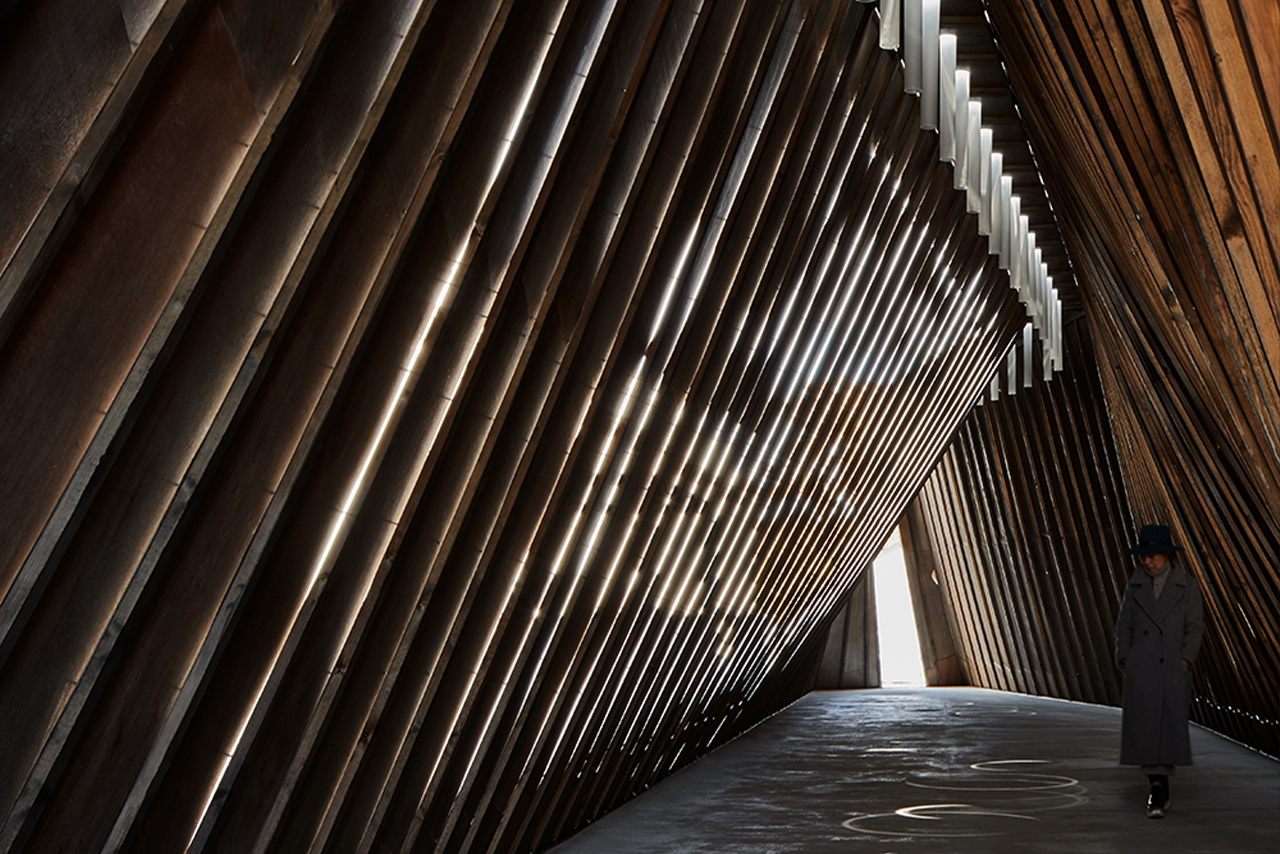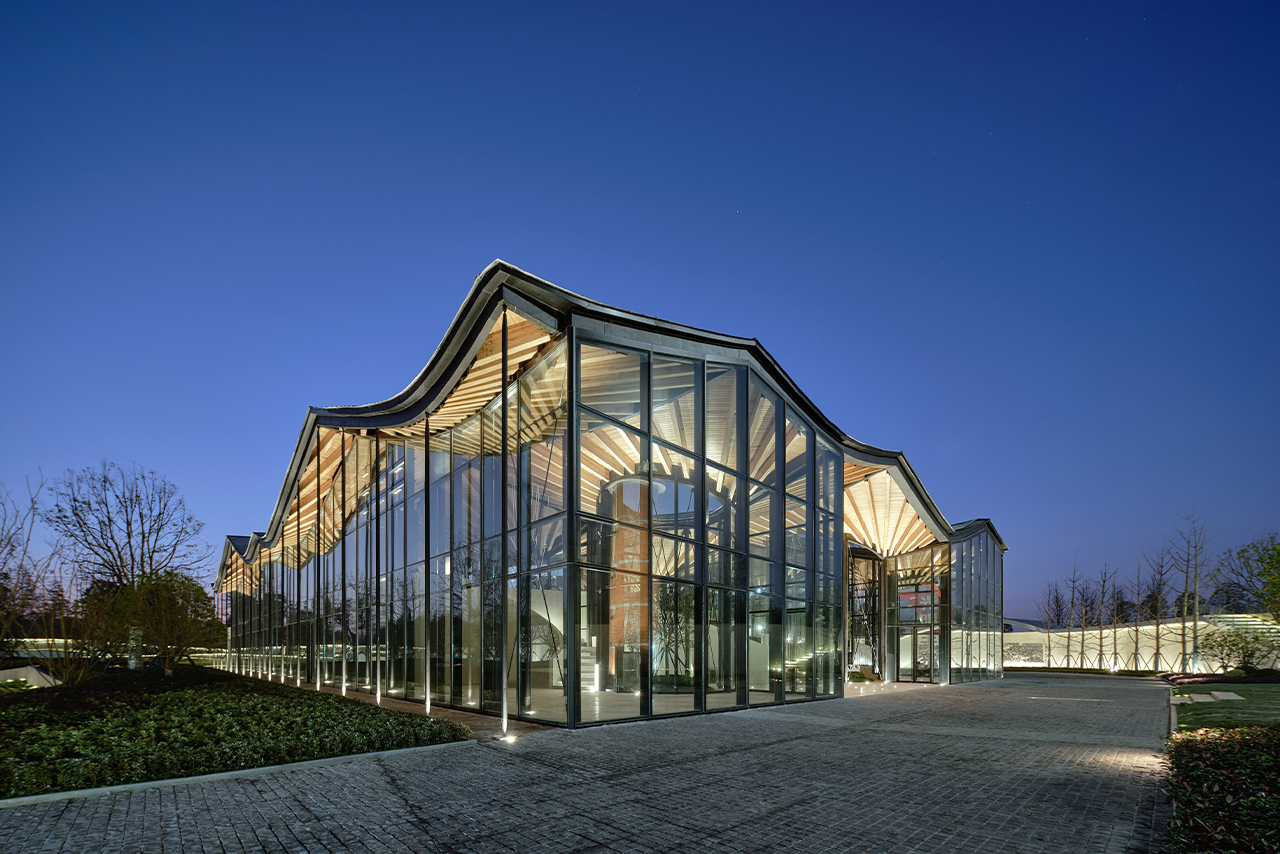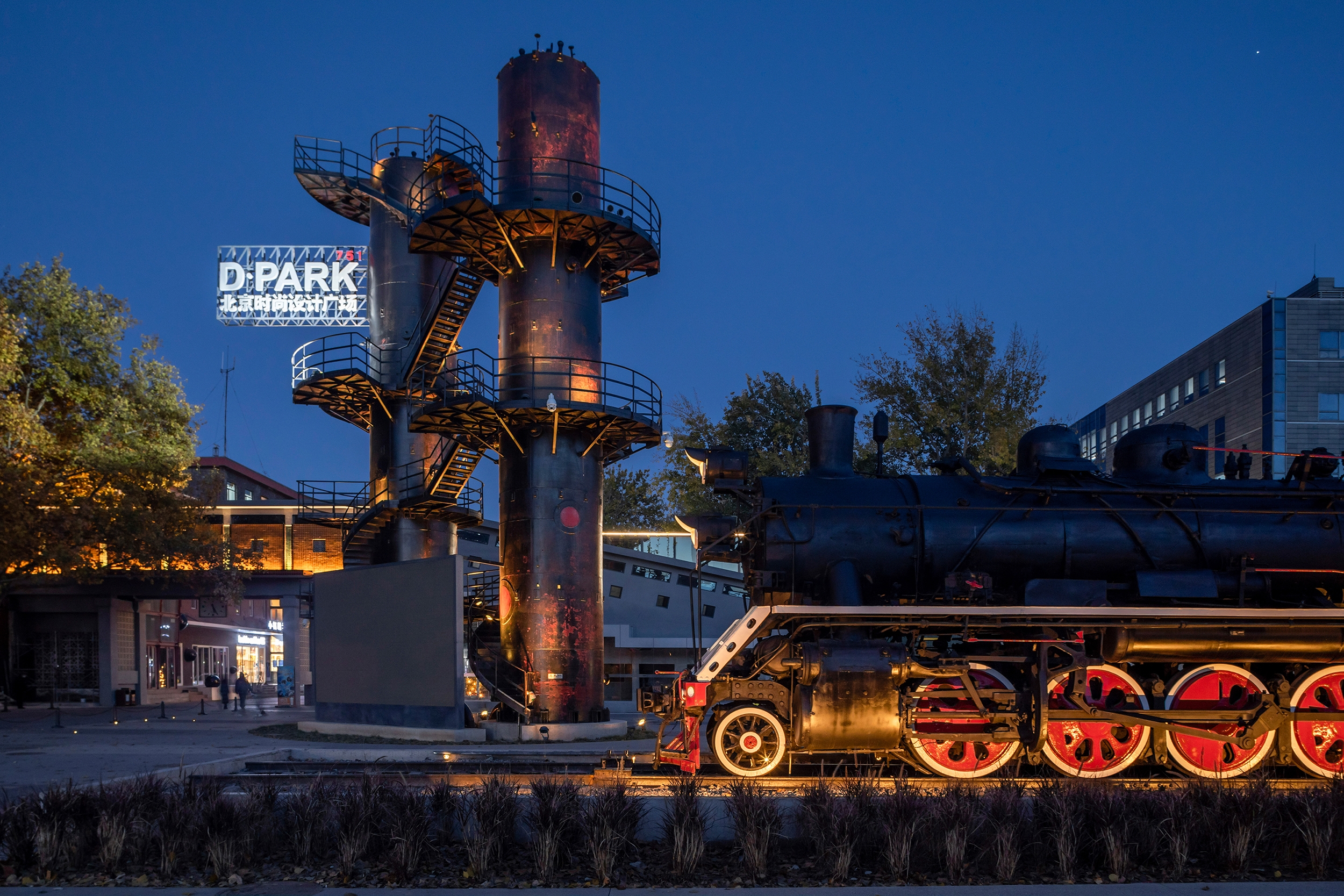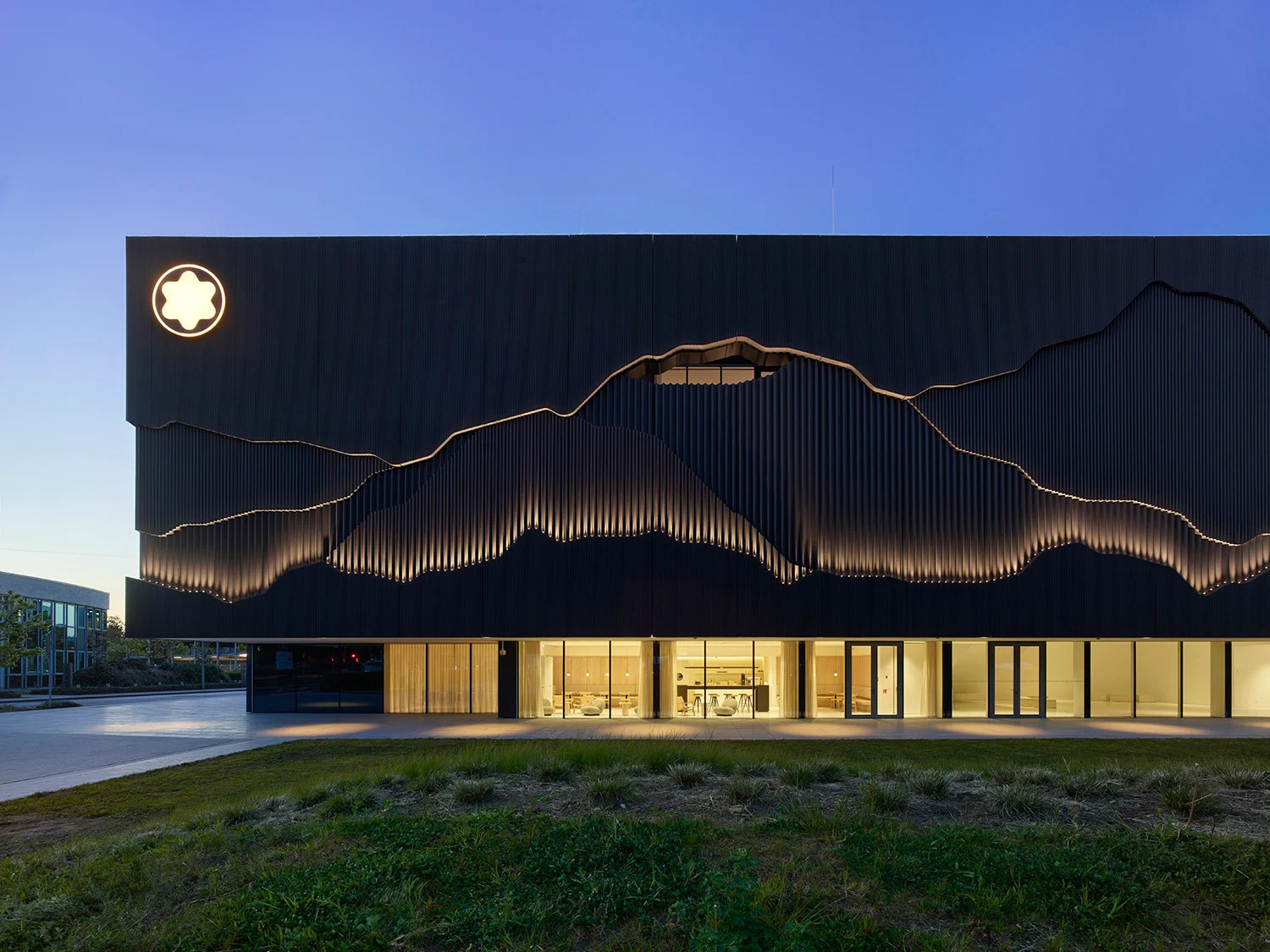Echoes Carved in Living Darkness
The descent into IronPlate begins not with a view, but with a sensation. Darkness is not the absence of light here; it is the raw material from which the entire space seems carved. The first encounter, a narrow stairway submerged in shades of obsidian, feels like entering the belly of something ancient and deliberate. Every glimmer, every low hum of light along the steps, negotiates with the density of shadow. The design seems to reject spectacle and instead composes an atmosphere that moves between ritual and restraint.
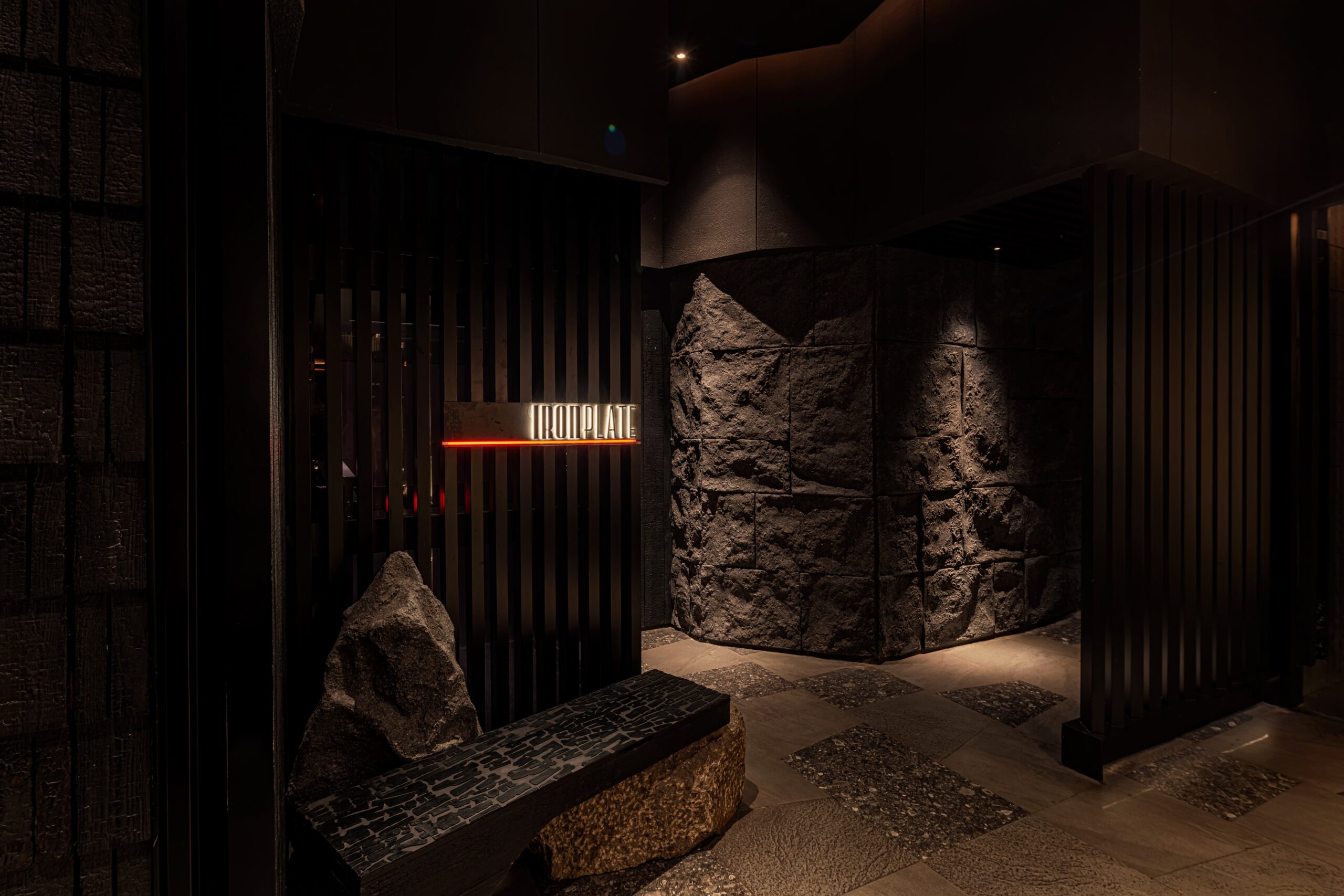
The architects and lighting designers appear to have understood that black is not a color but a condition. Within that condition, they sculpt layers of perception. The stair lighting, small, cylindrical beacons tucked against the risers, sets the tone: light as a guide, not as decoration. Their precise placement in a zigzag pattern fractures uniformity, creating an almost rhythmic irregularity that feels human rather than engineered. It is an early signal that this project is not about control but about tension, between the tactile and the ethereal, the reflective and the absorbent.
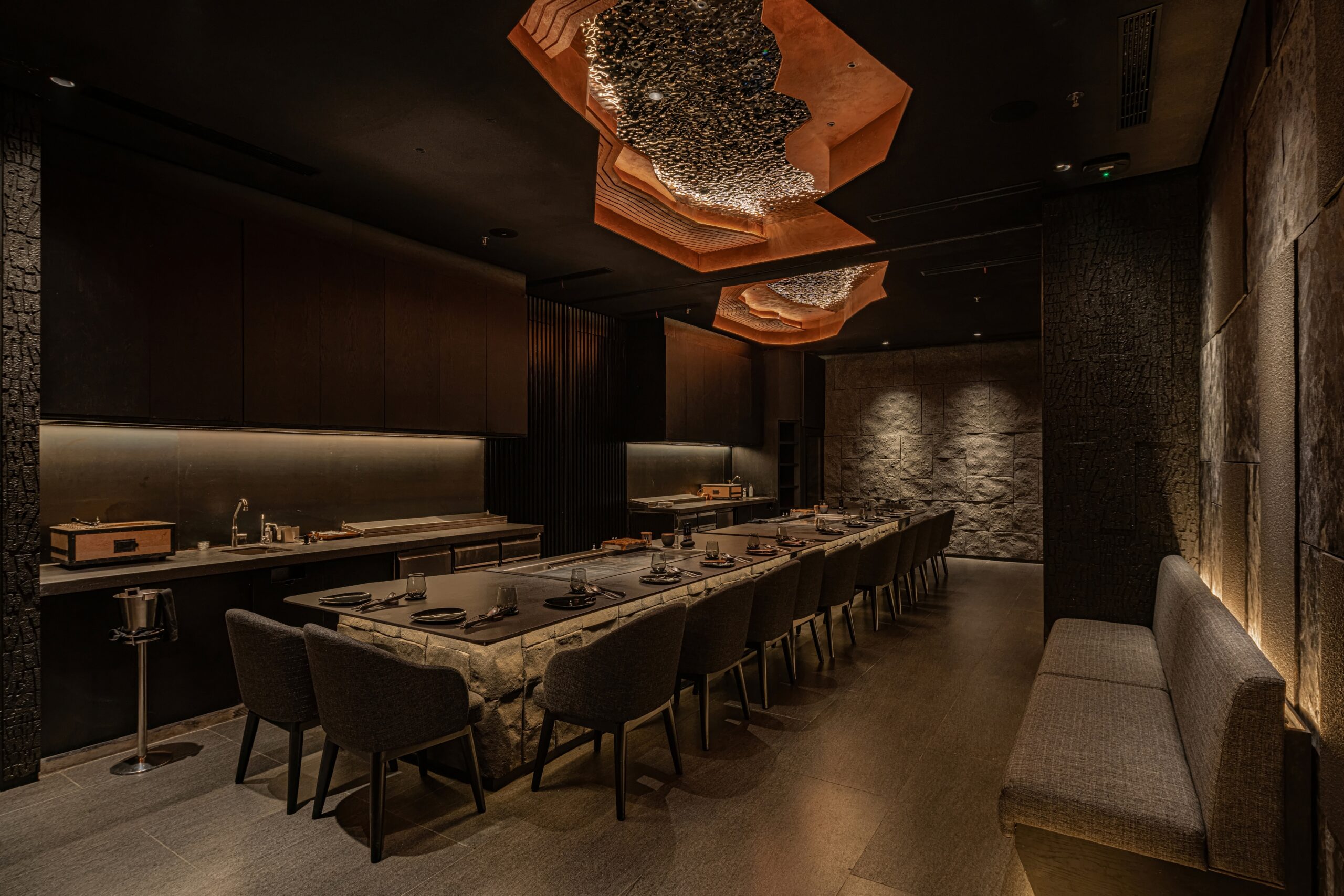 Inside, the relationship between material and illumination deepens. Stone, steel, and burned textures catch the faintest reflections, performing a quiet duet with the warm amber light that flickers like a memory of molten metal. The designers have extracted the poetic potential from an industrial palette, letting light inhabit surfaces the way breath inhabits lungs, imperceptible yet essential. The ripple stainless steel ceiling in the corridor becomes a liquid canvas, transforming the ceiling into an optical current. The dotless LED strips running along it dissolve the boundaries between matter and mirage, turning reflection into motion, and motion into light.
Inside, the relationship between material and illumination deepens. Stone, steel, and burned textures catch the faintest reflections, performing a quiet duet with the warm amber light that flickers like a memory of molten metal. The designers have extracted the poetic potential from an industrial palette, letting light inhabit surfaces the way breath inhabits lungs, imperceptible yet essential. The ripple stainless steel ceiling in the corridor becomes a liquid canvas, transforming the ceiling into an optical current. The dotless LED strips running along it dissolve the boundaries between matter and mirage, turning reflection into motion, and motion into light.
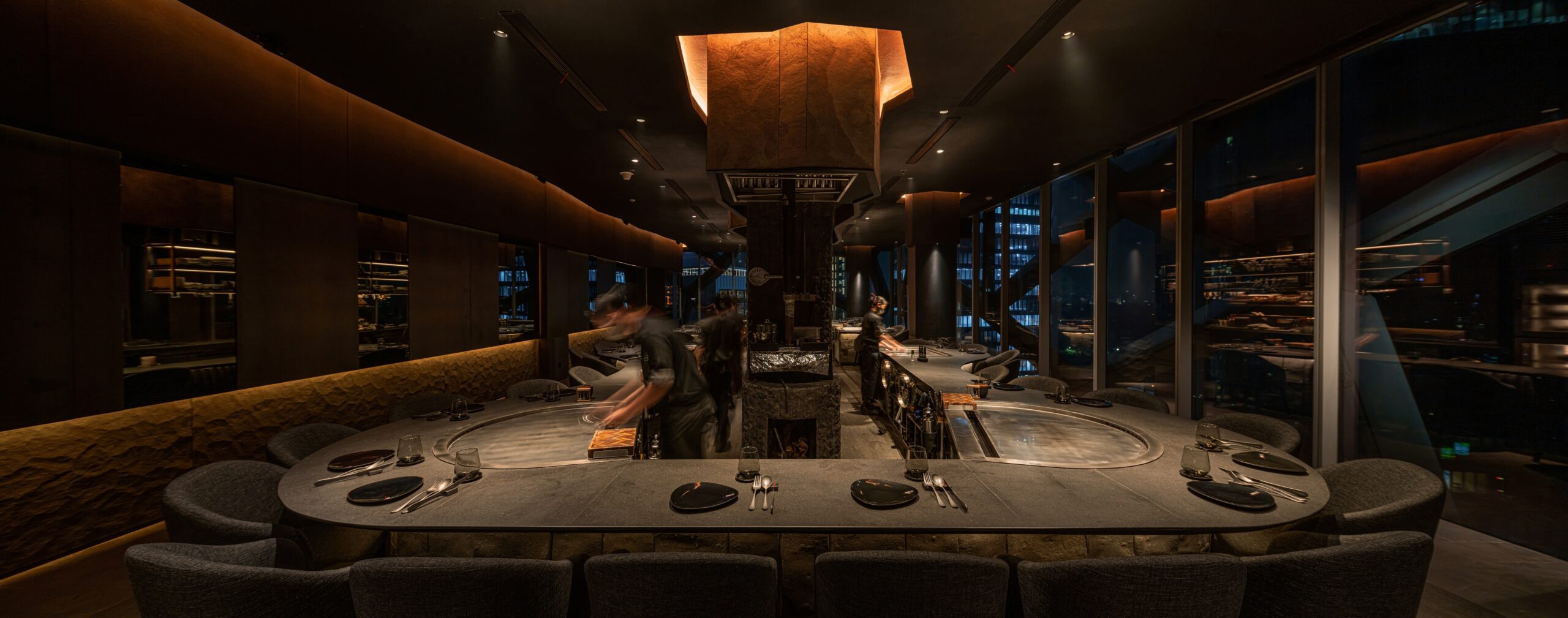
In the dining space, the light does not merely reveal the room; it stages it. The central teppan station is the axis of performance, where the choreography of chefs becomes the visual centerpiece. The lighting takes this idea literally, shaping a theatre of intimacy around the cooking process. Narrow-beam spotlights in 2700K focus the viewer’s gaze on the glint of knives, the marbling of raw meat, the slow bloom of heat across the grill. There is an honesty to this approach: the light exposes rather than flatters, translating the textures of food into a visual narrative of transformation. CRI95 accuracy ensures that the tones of the ingredients, reds, golds, seared browns, emerge in their full emotional register.
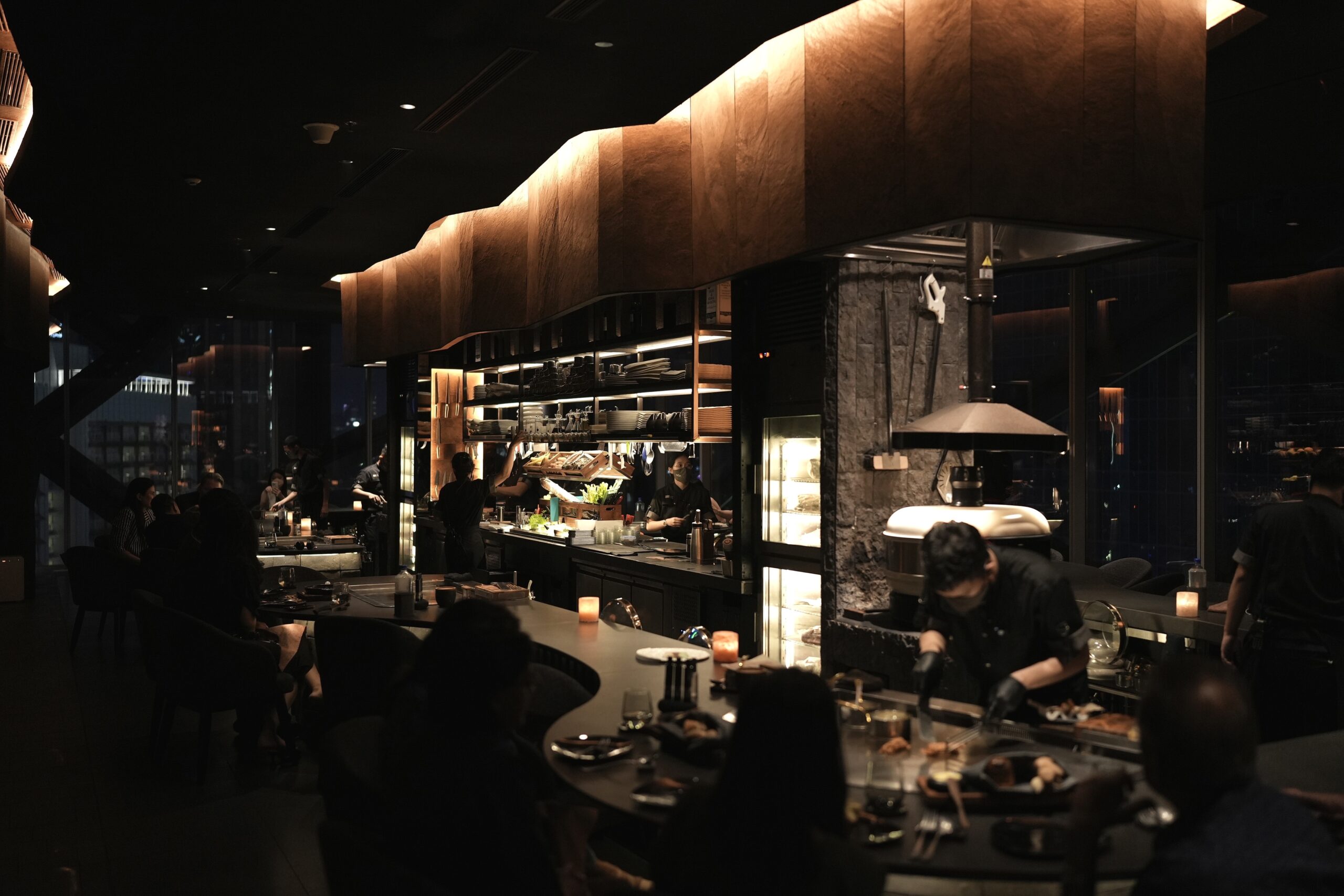
This kind of precision lighting risks sterility in less thoughtful hands, yet here it remains grounded in atmosphere. Around the periphery, warm gradients soften the geometry of the bar, allowing the diners’ silhouettes to dissolve into the background. The amber glow emanating from above the kitchen hood functions not as an accent but as a counterbalance, a subtle echo of the “heated iron” concept that birthed the design. It is an evocative decision: light here remembers its origin, returning to the metaphor that underpins the entire spatial logic.
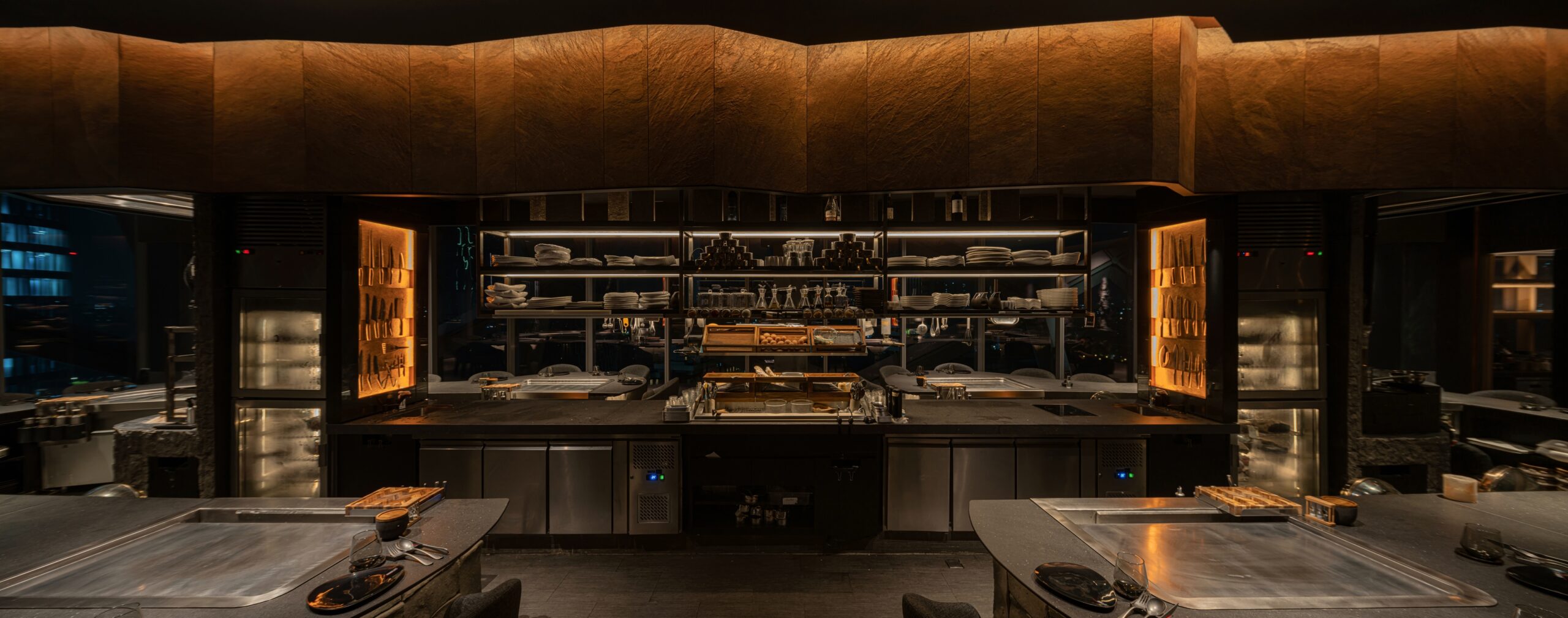
There is, however, a discipline that borders on austerity. The darkness in IronPlate does not comfort; it confronts. Some moments feel almost monastic in their restraint, as if the designers trusted silence more than illumination. It’s a powerful statement, though not without risk. Patrons unaccustomed to such visual compression may perceive it as oppressive. Yet from a design standpoint, this compression is precisely what lends the project its integrity. The minimal use of luminaires, each operating with surgical intent, prevents distraction and maintains a sculptural consistency that allows light to function as narrative punctuation rather than decoration.
Sustainability, though addressed through the reuse of Dynalite controls and dimming systems, feels less like a technical afterthought and more like an ethical extension of the design’s restraint. Efficiency here is not quantified solely in wattage but in conceptual economy, using the least to achieve the most. The controlled dimming and limited lighting zones produce a visual intimacy that is both ecological and psychological. This moderation, this refusal to indulge in visual excess, is what roots the project in a kind of contemporary humility.

The most remarkable achievement of IronPlate’s lighting, however, lies in its ability to give the architecture an emotional temperature. The space reads as hot, even when the air is cool. The play of black against amber, the gentle shimmer of metal under low light, the almost volcanic undertone of the color palette, all conspire to create an impression of heat held in suspension. It is as if the restaurant itself were a forge, where steel, stone, and flame momentarily coexist before solidifying into calm.
Lighting design, at its best, is an act of translation: it converts material logic into sensory truth. In IronPlate, that truth is unmistakably tactile. The light is not simply seen, it is felt against the skin, resonating through the density of the surfaces. Each reflection carries the weight of the designer’s intent: to let light behave like a living substance, unpredictable but controlled, precise yet instinctive.
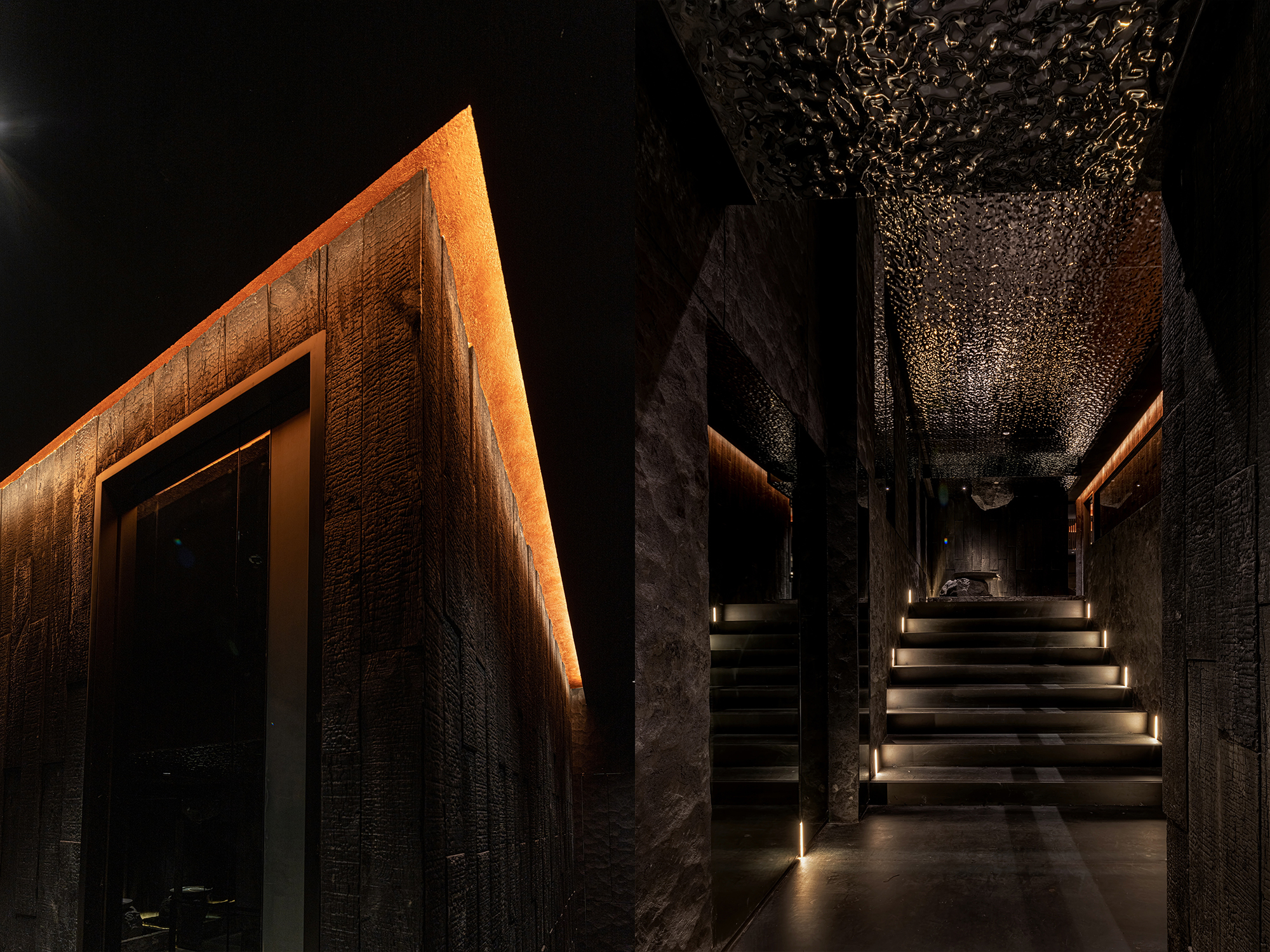
What emerges is not a restaurant lit for comfort, but one lit for contemplation. The guest becomes an observer within a slow-moving play of darkness and fire. It’s a space that invites pause, perhaps even self-awareness, a reminder that illumination can also be an act of introspection. IronPlate’s designers have not tried to make the darkness beautiful. They have allowed beauty to be found within it.




